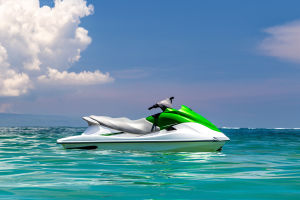Diving is an exhilarating sport that not only allows individuals to explore the wonders of the underwater world but also offers a full-body workout.
The physical benefits of diving are often underestimated, yet it is an excellent activity for developing muscles in every part of the body!
This is because diving engages multiple muscle groups simultaneously, promoting strength, endurance, and flexibility. One of the key aspects of diving is the constant need for core stability. Whether you are diving in open water or swimming in a controlled environment, maintaining proper posture and balance in the water requires your abdominal muscles and lower back to be engaged continuously.
As you dive deeper, the pressure of the water increases, making it necessary for your core to remain tight to stabilize your body. Over time, this can lead to stronger core muscles, which are crucial for overall body strength and stability.
In addition to the core, diving also strengthens the legs and hips. The act of kicking and swimming through the water requires significant force from your lower body muscles.
The legs are used to propel you forward and help with maneuvering, whether you're swimming to the surface or navigating through obstacles. The quadriceps, hamstrings, and calves are all involved in this process. The resistance of water makes each movement more challenging, which leads to muscle toning and increased strength in these areas.
The upper body also gets a thorough workout during a dive. The arms are constantly in motion, either pulling yourself through the water or controlling the movements of your diving equipment. Your shoulders, biceps, and triceps work together to move your body efficiently and help you maintain a steady pace while underwater.
Holding your body position and controlling your buoyancy also require a lot of effort from your upper body, which ultimately leads to improved muscular endurance in the arms and shoulders.
Furthermore, diving contributes to increased flexibility. As divers reach depths, they often need to make various adjustments in their positions, such as bending, twisting, or stretching.
These movements help to improve joint mobility and muscle elasticity, especially in the hips, shoulders, and spine. The dynamic nature of diving encourages a range of motion that can enhance overall body flexibility, preventing stiffness and promoting muscle relaxation.
Breathing is another crucial element of diving, and it plays a significant role in the development of the body's muscles. Controlled, deep breathing strengthens the diaphragm and intercostal muscles, which are responsible for efficient oxygen intake and expulsion.
Additionally, the mental focus required during diving should not be overlooked, as it complements the physical demands.
Concentrating on your movements, managing your buoyancy, and being aware of your surroundings require a mental engagement that helps improve coordination between the mind and body.
This overall sense of body awareness translates into better control over your muscle movements and contributes to muscle development. Diving is an exceptional way to develop muscles across the entire body. The resistance of water provides a natural form of resistance training, making it an effective workout for building muscle strength and endurance.
Whether it's the core, arms, legs, or even the diaphragm, each part of the body is engaged, making diving an all-encompassing exercise. So, the next time you dive into the water, remember that you're not only exploring the depths of the ocean but also giving your body a full-body workout!


